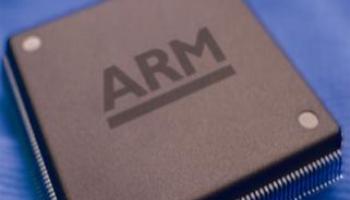Mobile Industry Engulfed In Chip ‘Core Wars’, Analyst Warns

Intel, ARM, Nvidia are contributing to the ‘Core Wars’ in the mobile chip sector, an analyst has warned
Analyst Jack Gold of J. Gold Associates has warned that the mobile industry currently has a “core war” underway.
His warning comes the LG Electronics Optimus 2X, the world’s first dual-core smartphone, was introduced in December and followed shortly after by the dual-core Motorola Atrix 4G and rumours of a dual-core HTC “Pyramid” headed for T-Mobile.
“For simple e-mailing, texting and basic web browsing, the need for multi-cores is minimal or non-existent. Current smartphones with capable single cores do quite well at these mundane tasks,” Gold said in a 21 February report. Though for many of the newer capabilities being added to phones, such as 3D gaming and HD video viewing, there actually is a need for more processing power.
GPU, Not CPU
However, Gold added, “in these scenarios the real benefit for multi-cores often comes not from having more CPUs, but from having more GPUs. And here, the core wars gets really interesting.”
Gold said that Nvidia, with its 12 GPU cores and upcoming chips with four CPUs, has staked out the high end of the market and jumped ahead of rival Qualcomm – which will play catch-up with its own in-house-designed multi-core GPU in upcoming chips. Following behind them, Samsung, ST Ericsson, Texas Instruments and others will be joining the competition, albeit at a later date.
Additionally, ARM is now battling long-time market leader Imagination Technologies in the graphics core licensing technology arena, as it’s decided whose GPU IP will be included in licensed chip designs for the vendors that don’t have their own graphics IP, Gold said. As ARM is a new player on this front, with Imagination Technologies having been the primary licensor of ARM attached graphics capabilities – and for other chip architectures, including Intel’s Atom – Imagination Technologies is winning for now.
 While ARM is often thought to be synonymous with mobile devices, Intel’s Atom line is putting pressure on the competition – especially as the popularity of the tablet form grows. (In December, Intel CEO Paul Otellini announced that manufacturer partners, including Toshiba, Lenovo, Fujitsu and Asus, are expected to introduce 35 Atom-based tablets in 2011.)
While ARM is often thought to be synonymous with mobile devices, Intel’s Atom line is putting pressure on the competition – especially as the popularity of the tablet form grows. (In December, Intel CEO Paul Otellini announced that manufacturer partners, including Toshiba, Lenovo, Fujitsu and Asus, are expected to introduce 35 Atom-based tablets in 2011.)
Core Wars
“Intel will need to compete in the core wars, more for prestige and less for performance in my opinion,” Gold said in the report, explaining that while Atom may be able to do more per core than ARM, customers won’t understand this and so will demand the same numbers of cores.
“Atom,” he added, “will need to show graphics-oriented performance on a par with multi-core GPU implementations from Nvidia and Qualcomm in particular.”
In short, Gold concluded, the core wars are just heating up. Smartphones and other small devices with increased numbers of cores will take some time to emerge and, in order to take hold, will need to benefit from a trickle-down effect of “lower chip costs, reduced chip geometries for power savings and increased app functionality.”
For now, he advised, “users should select a device not based on the number of cores, but on the overall performance, functionality required and tradeoffs desired (for example battery life, size of device, costs, primary use).”